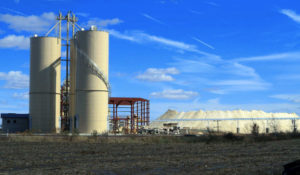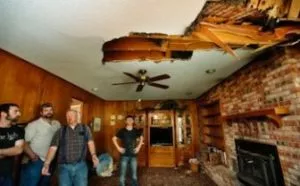Sand is critical to fracking. After workers drill down into rock, they create fractures by pumping in a mixture of water, chemicals and sand. The sand keeps the cracks propped open so that oil and gas are released.
Frac sand mining creates significant air pollution from the handling, mining, and processing of the sand. The important sources of air emissions come from the tiny dust particles – known as particulate matter – scattered during mining and processing.
These tiny dust particles, usually only a few microns in diameter, when inhaled in the lungs can lead to Silicosis – cancer of the lungs that poses a danger to miners and nearby communities.

Frac sand linked to lung disease in workers
The chronic silicosis caused by silica exposure poses unique dangers for employees working at frac sand mining sites. Because long-term exposure can be fatal, the Labor Department’s Occupational Safety and Health Administration (OSHA) issued draft regulations designed to reduce the health risk and previously issued a hazard alert.
Sand is basically silica — and breathing in silica is one of the oldest known workplace dangers. Inside the lungs, exposure to the tiny particles has been shown to sometimes lead to serious lung diseases like silicosis and lung cancer.
Workplace safety expert Eric Esswein and his team visited 11 fracking sites in five states: Arkansas, Colorado, North Dakota, Pennsylvania and Texas. At every site, the researchers found high levels of silica in the air. It turned out that 79 percent of the collected samples exceeded the recommended exposure limit set by the National Institute for Occupational Safety and Health.
There were some controls in place, says Esswein, who notes that “at every site that we went to, workers wore respirators.”
But about a third of the air samples they collected had such high levels of silica, that the type of respirators typically worn wouldn’t offer enough protection.
Neighbors fear for their health
Wisconsinites and Minnesotans (the two states producing most of the frac sand) who live around frac sand mining, processing and transportation facilities are concerned about the long term impacts of their exposure to silica dust.
As a result, some local governments have enacted bans and moratoria.
Mining puts water at risk
Frac sand processing also poses dangers to water sources. Miners commonly use chemicals called flocculants to clean, wash, or remove unwanted minerals or other fine particles from the processed sand. These chemicals can infiltrate in to groundwater after washing.
Long term exposure to common flocculants like polyacrylamides and acrylamides in high concentrations of drinking water can lead to nervous system, blood problems or increased risk of cancer.
Neither the federal nor state governments have developed drinking water standards for flocculants.
For More Information
- EARTHblog Frack sand mining doesn’t just suck, it blows
- EARTHblog In Frac Sand Land, Residents Have Little Protection Against Silica Dust Exposure
- NPR Sand From Fracking Could Pose Lung Disease Risk To Workers
- OSHA Worker Exposure to Silica during Hydraulic Fracturing
- Price of Sand Film
- CDC Silica
- Civil Society Institute Communities At Risk: Frac Sand Mining in the Upper Midwest




